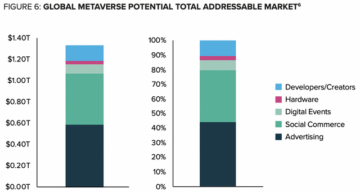
A heady combination of macroeconomic factors have ended the “free cash” era on which many growth investors and the ventures they back were built. The combination of the Russia:Ukraine war, the economic aftermath of Covid and Brexit have resulted in stubbornly high inflation and reactively increasing interest rates. Growth investors themselves are finding the fundraising environment tough, as competition for LP funds mounts – something they’ve not faced to the same extent since the global financial crisis.
As significantly, public markets have taken a dent too, and so too the prospects for late stage ventures hoping to IPO. IPOs were down 90% in London in 2022 in terms of proceeds and 62% in terms of the number of filings, hurting exit options for ventures reaching their full potential. This has backed up VC activity since last year. First, later stage funding declined, as did valuations, then the ripples started to be felt earlier in the funding cycle – as investors stuck closer to their core theses and wrote fewer cheques. This is represented in almost every metric – the number of deals, the value of deals, valuations.
They also changed behaviour within their portfolios, seeking to maximise the value of their current holdings by lobbying founders and leaders to shift their strategy. A number of founders have gone on record within layoff comms, or market commentary about this imposed shift from “growth-at-all-cost” to a more traditional cash generation stance. Sometimes called “the great reset” or “the great correction”, this marked shift in priorities has prompted a lot of debate, conjecture and talk of the tactics to succeed – as if the act of running a profitable business was a new concept entirely.
I’ve worked with a lot of venture backed scale ups over the last ten years – some of which have become the fastest growth and highest valued in the venture space. I’ve also worked with about the same number of ventures that didn’t make it – either stalling or running out of gas entirely. There is a striking commonality of those that have achieved rapid growth and positive margins, and a mirrored similarity in the deficiency of the ventures that didn’t. As founders and leaders of ventures encounter the great reset, these 4 traits may help them to make the shift.
They start with a deep and narrow focus
So often talked about, and so rarely heeded, the importance of focus is perhaps the biggest driver of success and failure for the early stages of ventures. The successful fintech ventures of the last 10 or so years have all picked off an underserved market, gained a deep understanding of the problems contained within them, and executed against those needs.
Conversely, I’ve seen a number of ventures that have taken a similarly focused view on the target segment, but only operated a superficial level of understanding of the true problems they face. Solving “convenience needs” (as opposed to deeper and more nuanced jobs) might drive adoption, but will rarely deliver the level of entrenched behaviour on which products become successful. Companies focused on servicing small businesses are generally far more guilty of this than any other segment (including B2B2C).
Similarly, I’ve encountered several ventures that have taken a very broad focus, and attempted to solve problems deeply for multiple segments or markets. To simultaneously operate as a platform as a service and direct channel, or to offer a service to both personal and business customers, or to internationalise within months of launch, rarely work as strategies. The counter argument to this is the eye watering size of the prize (TAM), but this overlooks a key fact – it takes a while to establish a product that achieves deep relevance with a customer group, and without this relevance, TAM is an abstract concept.
At a later stage, many ventures are regretting a divergence from the focus that made them successful. In most of the redundancy communications that have been publicised (Stripe, Shopify, GoCardless, Xero and many others) you will see many references to a renewed focus on a “core” product strategy.
They solve a problem worth paying for
Gaining a deep understanding of target customers is one thing, but finding a problem worth solving is something altogether tougher. The most successful founders that I’ve worked with not only understood the existing pains or unmet needs within their customers, but they’ve also worked out their willingness to pay at an early stage in their evolution as a venture.
Conversely, the ventures that I’ve seen that struggle to make the journey from promising product to compelling business often fail to establish the commercial principles underpinning both the product and customer relationship from day 1. Unlike content-based business where massive customer scale can later be monetised (see social media giants), this hasn’t happened in fintech. Take the famously tricky journey to upsell customers from free accounts to paid plans, and the lack of traction resulting – if a company changes a pricing model, they change their proposition, and it is not always fair to assume consumers will make the leap.
They understand alternatives, not just competition
When creating and launching new software products, the ability for that product to solve a problem is not the only driver or barrier to adoption. The most successful founders and product businesses understand that apathy and other human behaviours can be as big of a competitive threat as any similarly minded venture.
Ventures need to understand that doing nothing, solving problems in a suboptimal way, or sticking with analogue solutions are their own form of competition. For example, in SME banking – having done dozens of 1:1 customer interviews on various topics – using consumer banking products, or spreadsheets is more likely to be a reason to not buy than how a product compares to its nearest fintech rival. Many business plans are underdone by a lack of recognition of this.
They understand “the last mile” of adoption and nail it
Being successful in the market with a product requires complete alignment between product and go-to-market activities. Product and sales teams need an aligned understanding of their ideal target customer, a shared set of activities to reach them with the right messaging, functionality, and buyer journeys to get to revenue quickly and effectively. The most successful product businesses that I encounter have a very high degree of alignment against a clear view on their target customer behaviour.
The reality of buyer journeys, particularly, B2B can be complex. Far from the linear funnels against which most RevOps processes are designed, they can often involve repetition, multiple stakeholders, and staged adoption of new products. Emerging battlegrounds like product-led marketing (upselling as a function of the product) and developer experience (allowing tech stakeholders to engage with tech before a buy decision is made) have become a significant factor in ensuring the adoption and intended behaviour of customers aligns to original plans.
Less of a shift and more of a return to basics
The narrative surrounding the great shift in VC behaviour can be quite technical, describing themes like “CAC” and “LTV”, “Contribution Margins” and “Burn Rates”, but ultimately I would advocate for a simpler approach. Although some founders will view these measures and ratios of successful businesses as objectives, I see them as outcomes. Outcomes of successful product businesses.
Focusing on a detailed understanding of customers and how they choose and use products, what they are willing to pay for – enabled by an understanding of their alternatives – and tightly coupling product, marketing, sales and operations around delivering against these needs is the only reliable way to get to those outcomes.
My advice to leaders of ventures would be to start with a focus on customers and building a great product, rather than ticking arbitrary financial ratios.
- SEO Powered Content & PR Distribution. Get Amplified Today.
- PlatoData.Network Vertical Generative Ai. Empower Yourself. Access Here.
- PlatoAiStream. Web3 Intelligence. Knowledge Amplified. Access Here.
- PlatoESG. Automotive / EVs, Carbon, CleanTech, Energy, Environment, Solar, Waste Management. Access Here.
- BlockOffsets. Modernizing Environmental Offset Ownership. Access Here.
- Source: https://www.finextra.com/blogposting/24638/the-great-vc-reset-no-room-for-bad-product?utm_medium=rssfinextra&utm_source=finextrablogs
- :has
- :is
- :not
- :where
- $UP
- 1
- 10
- 2022
- a
- ability
- About
- ABSTRACT
- Accounts
- achieved
- Achieves
- Act
- activities
- activity
- Adoption
- advice
- advocate
- aftermath
- against
- aligned
- Aligns
- All
- Allowing
- also
- alternatives
- Although
- altogether
- always
- an
- and
- any
- approach
- ARE
- argument
- around
- AS
- assume
- At
- attempted
- B2B
- B2B2C
- back
- backed
- Bad
- Banking
- barrier
- BE
- become
- been
- before
- behaviours
- between
- Big
- Biggest
- both
- Brexit
- broad
- Building
- built
- business
- business customers
- business plans
- businesses
- but
- buy
- BUYER..
- by
- called
- CAN
- Cash
- change
- changed
- Changes
- Channel
- Choose
- clear
- closer
- combination
- Commentary
- commercial
- Communications
- Companies
- company
- compelling
- competition
- competitive
- complete
- complex
- concept
- conjecture
- consumer
- Consumers
- contained
- Core
- Counter
- Covid
- Creating
- crisis
- Current
- customer
- Customer Relationship
- Customers
- cycle
- day
- Deals
- debate
- decision
- deep
- deeper
- Degree
- deliver
- delivering
- designed
- detailed
- Developer
- DID
- direct
- Divergence
- doing
- done
- down
- dozens
- drive
- driver
- Earlier
- Early
- early stage
- Economic
- effectively
- either
- emerging
- enabled
- encounter
- engage
- ensuring
- entirely
- entrenched
- Environment
- Era
- establish
- Every
- evolution
- example
- executed
- existing
- Exit
- experience
- extent
- eye
- Face
- faced
- fact
- factor
- factors
- FAIL
- Failure
- fair
- famously
- far
- fastest
- fewer
- filings
- financial
- financial crisis
- finding
- Finextra
- fintech
- First
- Focus
- focused
- For
- form
- founders
- Free
- from
- full
- function
- functionality
- funding
- Fundraising
- funds
- gained
- GAS
- generally
- generation
- get
- giants
- Global
- global financial
- Go-To-Market
- GoCardless
- gone
- great
- Group
- Growth
- guilty
- happened
- Have
- having
- help
- High
- High inflation
- highest
- Holdings
- hoping
- How
- HTTPS
- human
- i
- ideal
- if
- importance
- imposed
- in
- Including
- increasing
- inflation
- intended
- interest
- Interest Rates
- Interviews
- Investors
- involve
- IPO
- IPOs
- IT
- ITS
- Jobs
- journey
- Journeys
- jpg
- just
- Key
- Lack
- Last
- Last Year
- Late
- later
- launch
- launching
- LAYOFF
- leaders
- Leap
- Level
- like
- likely
- lobbying
- London
- Lot
- LP
- Macroeconomic
- made
- make
- many
- margins
- marked
- Market
- Marketing
- Markets
- massive
- May..
- measures
- Media
- messaging
- metric
- might
- minded
- model
- months
- more
- most
- multiple
- NARRATIVE
- narrow
- Need
- needs
- New
- new products
- no
- nothing
- number
- objectives
- of
- off
- offer
- often
- on
- ONE
- only
- operate
- operated
- Operations
- opposed
- Options
- or
- original
- Other
- Others
- out
- outcomes
- over
- own
- paid
- pains
- particularly
- Pay
- paying
- perhaps
- personal
- picked
- plans
- platform
- Platform as a Service
- plato
- Plato Data Intelligence
- PlatoData
- portfolios
- positive
- potential
- pricing
- pricing model
- principles
- prize
- Problem
- problems
- proceeds
- processes
- Product
- Products
- profitable
- promising
- proposition
- prospects
- public
- quickly
- rapid
- rarely
- Rates
- rather
- ratios
- reach
- reaching
- Reality
- reason
- recognition
- record
- references
- relationship
- relevance
- reliable
- renewed
- represented
- requires
- resulted
- resulting
- return
- revenue
- RevOps
- right
- ripples
- Rival
- Room
- running
- Russia
- sales
- sales teams
- same
- Scale
- see
- seeking
- seen
- segment
- segments
- service
- set
- several
- shared
- shift
- Shopify
- significant
- significantly
- Similarly
- simpler
- simultaneously
- since
- Size
- small
- small businesses
- SME
- So
- Social
- social media
- Software
- Solutions
- SOLVE
- Solving
- some
- something
- Space
- Stage
- stages
- stakeholders
- stalling
- start
- started
- sticking
- strategies
- Strategy
- stripe
- Struggle
- succeed
- success
- successful
- Surrounding
- tactics
- Take
- taken
- takes
- Talk
- TAM
- Target
- teams
- tech
- Technical
- ten
- terms
- than
- that
- The
- their
- Them
- themselves
- then
- There.
- These
- they
- thing
- this
- those
- threat
- ticking
- tightly
- to
- too
- Topics
- tough
- traction
- traditional
- true
- Ukraine
- ukraine war
- Ultimately
- underpinning
- underserved
- understand
- understanding
- understood
- unlike
- unmet
- UPS
- use
- using
- Valuations
- value
- valued
- various
- VC
- venture
- Ventures
- very
- View
- war
- was
- watering
- Way..
- were
- What
- which
- while
- will
- willing
- Willingness
- with
- within
- without
- Work
- worked
- worth
- would
- wrote
- xero
- year
- years
- you
- zephyrnet












